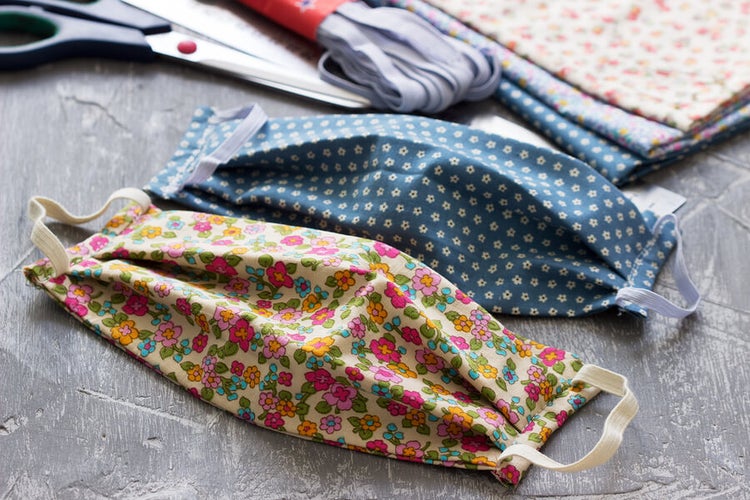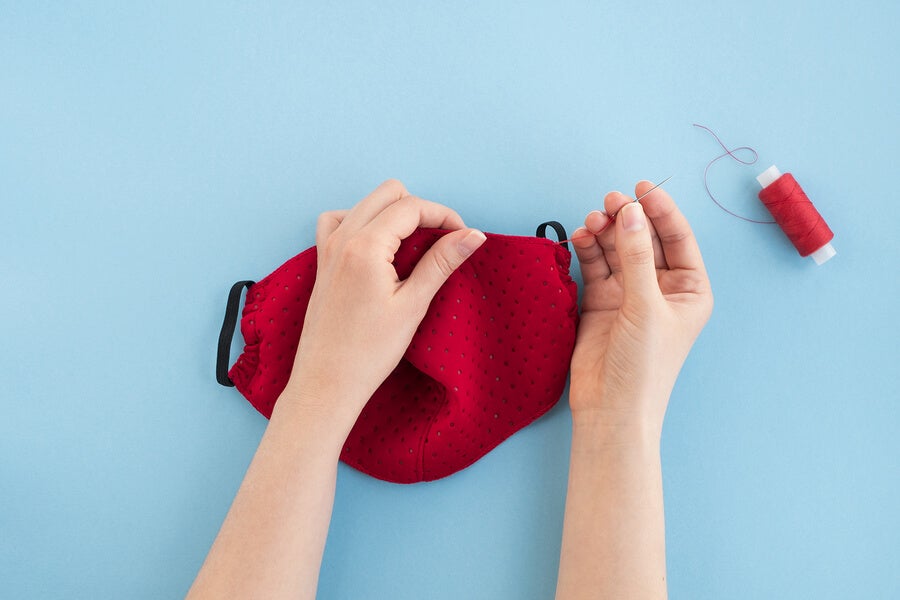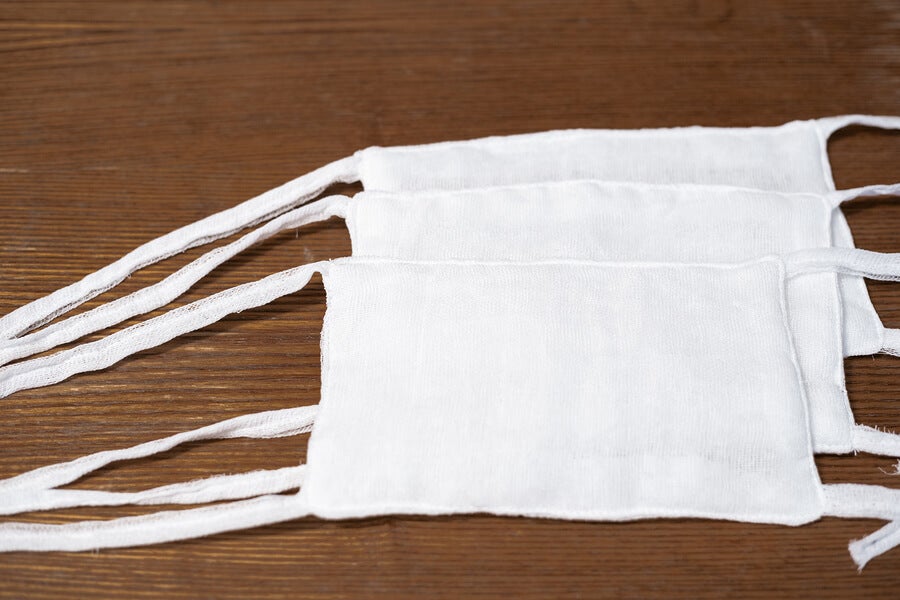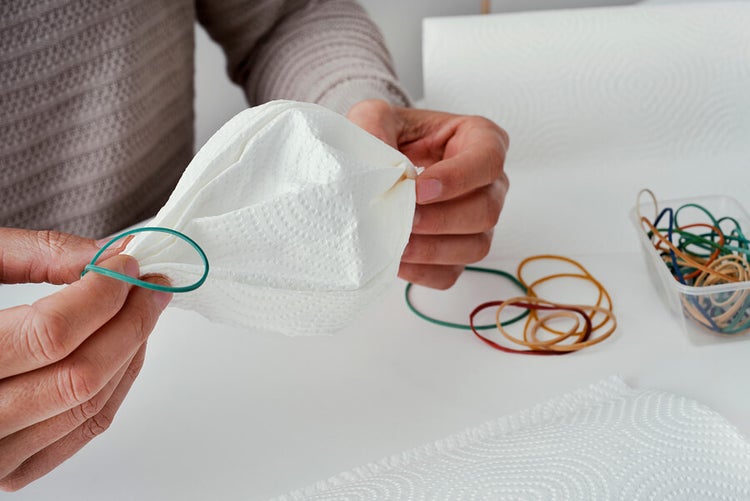How to make cloth masks at home?

In recent days, the Centers for Disease Control and Prevention has suggested the use of cloth masks as a measure to help delay the spread of the new coronavirus (COVID-19). How to make them at home?
The issue of the widespread use of cloth masks as a preventive measure to reduce the spread of COVID-19 continues to generate controversy. Despite this, in recent days the recommendation to use them has gained strength, especially in public places where it is difficult to maintain social distance, such as the supermarket or the pharmacy.
And while it is clear that by themselves they cannot prevent a person from becoming infected, they are a barrier to reducing or delaying the spread of the virus, especially in those cases of asymptomatic people who are unaware that they can transmit the disease to others. Can we do them at home?
The answer is yes. In fact, the Centers for Disease Control and Prevention have shared simple instructions for ordinary people to make their own low-cost face masks now that high demand makes it difficult to buy. Discover the steps!
Before sharing the tutorials to make cloth masks at home we must make something clear: both the Centers for Disease Control and Prevention and the World Health Organization and other health authorities have warned that these masks help slow the spread of Viruses , however, do not provide the level of protection of surgical masks or N95 medical respirators.
In fact, they point out that the latter options are essential supplies and, therefore, should be reserved for health personnel. Even so, cloth masks can help increase protection in the population, especially when essential outlets have to be made, whether it is to buy food, medicine or other essential items.
On the other hand, these entities point out that cloth masks should not be placed on children under 2 years of age, patients with respiratory difficulties or in a state of unconsciousness, and disabled people who cannot remove the mask without help. Making all this clear, let’s see then the steps.
1. Stitched cloth face mask
One of the most recommended materials to make cloth masks is cotton. Andrea Burón, spokesperson for the Spanish Society of Public Health and Health Administration ( SESPAS ) explained to the Spanish newspaper El País that, although there is no scientific evidence, cotton is perhaps the ideal material.
The reason is that, on the one hand, cotton conforms well to the shape of the face, preventing protection from being reduced by gaps between the skin and the mask. On the other hand, it is a fabric that does not usually cause aggressions on the skin as it happens with other materials.

Cotton fabric is recommended because it does not cause skin irritation. In addition, it is better fixed to the face.
Materials
- 2 rectangles of cotton fabric of 25 cm by 15 cm
- 2 elastic straps, either fabric strips, hair bands or elastic bands
- Scissors
- Needle and thread
- Sewing machine
Instructions
- To start, we cut the two rectangles of fabric in the indicated measurements. It is important to use thick cotton, since if it is thin or frayed, it reduces its ability to protect.
- Next, we make a small hem on the longest sides, half a centimeter (or a little more); and we also fold 1.25 cm on the short sides.
- We fix the hems with thread and introduce the elastic band in the widest hem. These bands will be the ones that will hold the mask to the ears.
- After inserting it into the hem, we tie the ends. Then we pull carefully so that the knots are inside the hem.
- Next, we join the ends of the mask joined by the elastic, so that they are adjusted to the size of our face.
- Finally, we sew the elastic to prevent it from slipping and to make sure it is secure.
2. Face mask with a T-shirt and seamless
Either because there is no needle and thread on hand, or because we are not given the sewing, there is another simple tutorial to make facial masks with an old shirt (yes, it is not worn).

An old shirt may be enough to make a face mask at home. However, it must be in good condition.
Materials
- Old shirt
- Scissors
Instructions
- First, we are going to cut the bottom of the shirt, with a width of about 20 cm.
- Next, we take the cut fabric and make another cut of a rectangle between 15 and 17 cm.
- Now, we make a cut in the middle of the strips that remain after removing the rectangle.
- Finally, we only have to tie the straps on the neck and the top of the head, making sure that the mask fits well to the face.
3. Mask with a coffee filter and handkerchief
A last option suggested by the CDC to make our own masks, also without the need for seams, are those made with a coffee filter and a handkerchief. However, it is important to clarify that this option is not reusable.

In case you only have a handkerchief on hand, we can use a coffee filter to improvise a mask. However, after using it, we throw the filter in the trash and repeat the procedure.
Materials
- 1 coffee filter
- 50 cm by 50 cm scarf
- 2 elastic bands
- Scissors
Instructions
- First, we cut the coffee filter to fit the scarf.
- Then we fold the scarf in half and place the filter in the center of the folded scarf.
- Now we fold the top part down and the bottom part up.
- We introduce the elastic bands, separated about 15.25 cm from each other.
- We fold the sides towards the center and put one end inside the other.
- To finish, we verify that the mask fits well to our face. In addition, for a new use, we throw the filter and the bands in the trash, wash the handkerchief well and repeat the procedure.
Cloth masks: tips not to forget
As we discussed, cloth masks alone do not provide complete protection against the coronavirus (COVID-19). Therefore, it is important to use them with caution and wash them well before using them again . Putting them in the washing machine will be enough to keep them clean.
On the other hand, when removing them from the face, we must be careful not to touch the eyes, nose or mouth without first washing our hands . A good hand wash should last at least 20 seconds.







